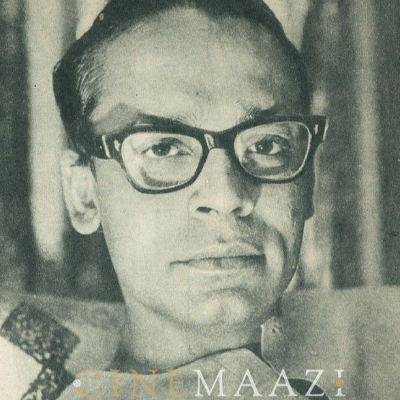This section is for paid subscribers only. Our subscription is only $3700/- for one full year.
You get unlimited access to all paid section and features on the website with this subscription.
Subscribe to read full article
This section is for paid subscribers only. Our subscription is only $37/- for one full year.
You get unlimited access to all paid section and features on the website with this subscription.
Not ready for a full subscription?
You can access this article for $2, and have it saved to your account for one year.
- LanguageBengali
- Run Time98 mins
- Shooting LocationRadha Films Studio
A landmark film in Bengali cinematic realism, Chinnamul tells the story of a little village Naldanga in East Bengal which is torn apart by the Partition of 1947. The village has both Hindus and Muslims working and staying together in peace among whom Srikanta is the only one who is politically aware and motivates others to fight for their rights. Two greedy men of the village Madhu Ganguli and Muzaffar Khan conspire and get Srikanta arrested just before the Partition is put into effect. When news of riots all across the country due to Partition reaches Naldanga, Madhu and Muzaffar spread terror among the villagers and advise them to sell off their lands and go to Kolkata where they would be safe. Without Srikanta to advise them the villagers start selling off their lands to Madhu at very low rates and are almost forced to be uprooted (the title translated in English) from their homes and go search for a better life. One of the most iconic scenes of the film plays out when an old woman helplessly cries clinging to her home as she denies to be uprooted. As the group of villagers reaches Sealdah station they see the thousands of homeless people being forced to stay on the streets and inside the station; a shot which was without any professional actors but was a shot taken of the actual condition of Sealdah station at the time. Soon the group is led to an empty house by refugee volunteers where they settle down, and in Naldanga Srikanta is released from the prison. As days go by Srikanta comes to Kolkata in search of his wife and other friends from the village, and the group starts to look for any meagre work they can find. Highly skilled artisans are forced to work as hawkers and salespersons in the city but struggle to make ends meet. Finally, Srikanta finds them just as his wife gives birth to a son but the owner of the house refuses to let the refugees stay any longer and brings goons to force them out. As a ruckus takes place Srikanta’s wife dies and the film ends with a close-up of the grief-stricken face of Srikanta.
The film had a future legend of Indian cinema - Ritwik Ghatak playing a minor character. The Russian filmmkaer Vsevolod Pudovkin was so impressed with the film that he took its print with him to be exhibited in Russia. The film featured actual documentary footage of refugees, an early example of the blending of documentary and fiction filmmkaing in India.
Cast
-
Prematosh Roy
Srikanta
Crew
-
BannerDesh Pictures
-
Director
-
Producer
-
Story Writer
-
Screenplay
-
Dialogues
-
Cinematography
-
Editing
-
Sound Recording/ Audiography








.jpg)



